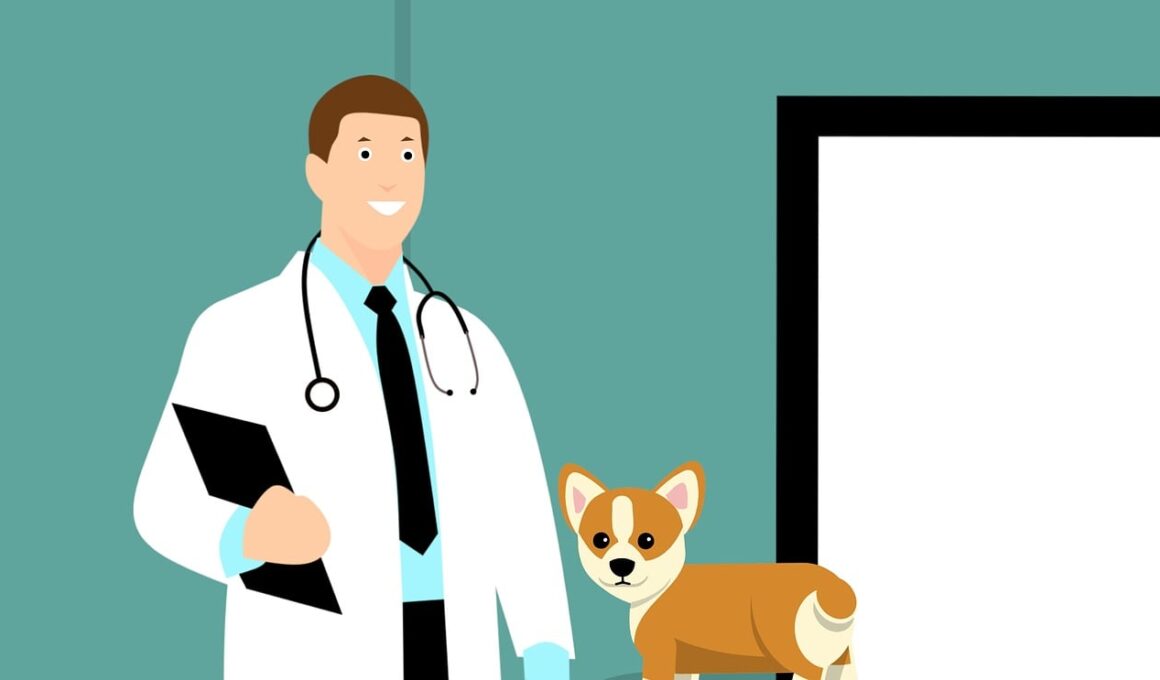How to Prepare Your Dog for Vet Visits to reduce Anxiety
Veterinary visits can be a source of anxiety for many dogs, leading to behavioral issues and stress for both the pet and its owner. Understanding this fear is essential in preparing your dog effectively. It is imperative to introduce them to the vet environment gradually while maintaining a calm demeanor. Begin by getting your dog familiar with the car rides associated with visits to the clinic. After that, you can take your dog to the vet’s office for brief visits where no treatments are administered. This positive reinforcement approach will create a more relaxed mindset when they have to go for actual check-ups. Consider asking the staff at the vet’s office if they could spare a few minutes for your dog to simply be in the clinic without any medical procedures involved. This will build their confidence and reduce anxiety during future visits. You should associate the vet’s office with positive experiences, such as treats, praise, and playtime. A dog that feels secure will be much more manageable and less anxious during their vet visits and other necessary interventions.
Another effective strategy to reduce your dog’s anxiety during vet visits centers around finding a strong support system. Look for a veterinary practice that understands canine behavior and is willing to accommodate your pet’s needs. You may also want to consider additional training focusing on socialization skills. Many training schools provide lessons specifically tailored to make your dog feel more comfortable in various environments. Social walks or visits to dog parks in the neighborhood can also contribute positively to your dog’s social skills. Ensuring your dog has a familiar and secure bond with you can make a world of difference in their comfort level in unfamiliar situations like the vet. Reward them with their favorite toys or treats after each successful visit, even if it’s brief. This consistent practice can lead to increased confidence and relaxation over time. Learning to read your dog’s body language is just as crucial; it allows you to address any signs of discomfort or fear. Be patient, as building this new routine will take time, but the reduction in fear will be worth the effort for both your dog and you.
Identifying Signs of Anxiety in Dogs
Recognizing the signs of anxiety in dogs is essential for better management. Generally, anxious dogs may exhibit behaviors such as hiding, excessive barking, drooling, or even aggressive responses. A dog that struggles with anxiety may also avoid certain areas, such as the car or the vet’s office. Being observant of these behaviors gives you a stronger framework for understanding how to help them cope. Ensure that you have a conversation with your veterinarian about their specific fears and preferences; good communication can be vital in addressing these issues. The vet might also suggest behavioral therapy techniques specifically catered to your dog’s situation. You can work on easing your dog’s anxiety through calming aids, such as anxiety wraps or pheromone diffusers, specifically designed to make them feel secure. Many pet owners find these tools beneficial alongside a consistent positive reinforcement routine. Pairing training with these calming methods may yield better results. Remember that each dog is different; what works for one dog may not necessarily be effective for another, so adjust your approach accordingly.
In addition to behavioral therapy, the environment plays a significant role in your dog’s response to vet visits. Preparing your home with comforting elements such as a safe space can provide a place where your dog feels secure. Using favorite blankets or toys in that area can help alleviate any escalating anxiety. Keep the area private and quiet, shielding them from outside noise and disruption. Socialization extends beyond just external experiences; letting them interact with family members and friends within their comfort zone can enhance their social skills. By establishing a safe haven within your home, your dog will have a reliable spot to retreat to when anxious, whether during vet appointments or stressful situations. During vet visits, consider bringing along something familiar, like a favorite blanket or toy, that they associate with comfort. Gradually introducing them to the vet environment without pressure can lessen anxiety and allow for a better experience during medical exams. Maintaining consistency between home and office will help reinforce their comfort during the vet visits. Aim for a calm presence yourself, as dogs often mimic the emotional state of their owners.
The Importance of Routine
Maintaining a consistent routine can have a significant impact on reducing anxiety. Dogs thrive on predictability; therefore, establishing a regular schedule for feeding, walks, and playtime can provide essential stability. When your dog knows what to expect during the day, they will likely be less stressed when encountering unfamiliar situations, including vet visits. Routine is not just about time; it’s also about location. Familiarizing them with the vet’s office through regular, non-stressful visits can create a sense of normalcy. Be sure to vary the positive experiences they have during these visits, whether it involves exploring the office or getting treats from staff members. Make your dog’s schedule adaptable enough to allow for spontaneous events, which can ultimately help them become more resilient. Exercising them right before a vet appointment can help expel excess energy, contributing to a calmer demeanor when it’s time for their check-up. Moreover, incorporating some relaxation exercises, such as deep breathing techniques believed to calm dogs, can also augment your efforts to alleviate stress effectively.
Additionally, it can be beneficial to explore natural remedies or supplements that promote relaxation. Many products made from herbs or ingredients like valerian root are designed with pets in mind and can help reduce anxiety over time. Consult your veterinarian to see which options might be appropriate for your specific dog. Make sure to follow all dosing instructions provided, as proper dosage is key to achieving the intended calming effect. Keep track of changes in your dog’s behavior as you introduce any new remedy or routine; communication with your vet throughout this process is imperative. If adverse reactions occur, work together to find an alternative solution. To help measure your success, consider keeping a log of your dog’s anxiety levels over time, particularly before and after vet visits. This record can provide insights for you and your veterinarian regarding high-stress triggers and the effectiveness of your interventions. This ongoing dialogue can improve strategies to make these vet visits more manageable in the long run, benefitting both the dog and the owner.
Conclusion: Planning for Success
Successfully managing your dog’s fear and anxiety towards vet visits takes dedication, patience, and a solid plan. By implementing strategies that focus on gradual desensitization, understanding their behavior, and establishing a secure routine, you can create a better experience for your dog. Invest in their mental health by frequently engaging in positive activities and training that foster confidence. Building a relationship with your veterinarian also plays an essential role in ensuring a constructive approach tailored to your pet’s specific needs. Seize every small victory, and celebrate their successes while providing support through their learning journey. With dedication, you’ll decrease the stress associated with vet visits and enhance your dog’s emotional well-being. Continue adjusting your strategies based on progress, and don’t hesitate to seek professional advice if necessary. In the long run, the effort invested in preparing your dog for vet visits will pay off with a healthier, happier pet. Both your dog and you will become accustomed to regular veterinary check-ups without anxiety, establishing a healthier lifestyle overall.
Your dog’s mental health matters; prioritize helping them overcome their fears surrounding veterinary care. Through the implementation of these strategies, you’re reinforcing their confidence and emotional security. Try to keep the experiences various and frequent to maintain progress. As you learn to understand your dog’s unique needs, approaching veterinary care can become less daunting. Remember, your commitment to their well-being is the foundation for a happier life together. A confident dog not only leads to successful vet visits but also enriches your relationship with your furry companion, paving the way for a joyful and fulfilling life ahead.


